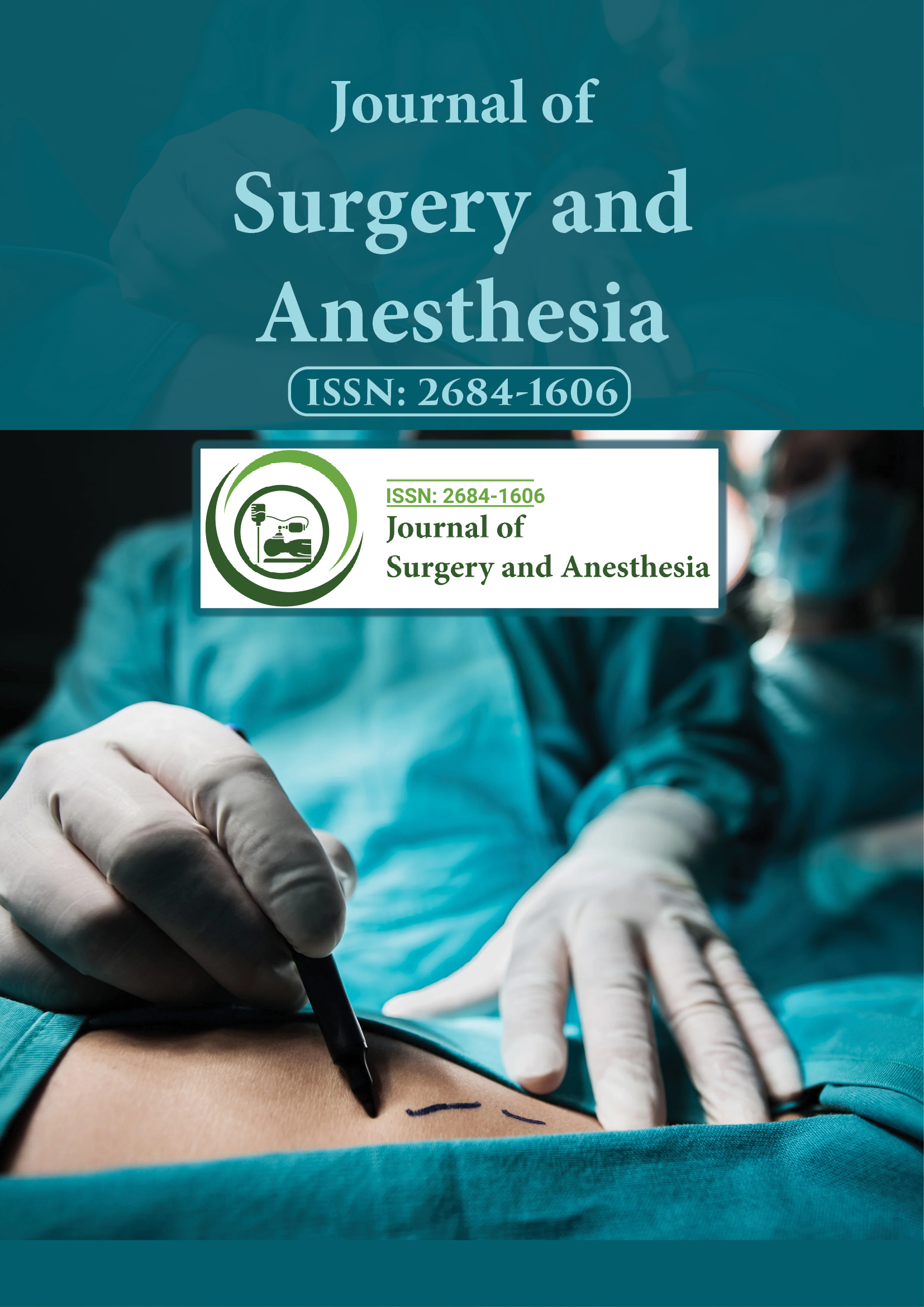Indexed In
- Google Scholar
Useful Links
Share This Page
Journal Flyer

Open Access Journals
- Agri and Aquaculture
- Biochemistry
- Bioinformatics & Systems Biology
- Business & Management
- Chemistry
- Clinical Sciences
- Engineering
- Food & Nutrition
- General Science
- Genetics & Molecular Biology
- Immunology & Microbiology
- Medical Sciences
- Neuroscience & Psychology
- Nursing & Health Care
- Pharmaceutical Sciences
Opinion Article - (2023) Volume 7, Issue 1
Complications of Anaesthesia after a Neurosurgical Procedure at the Post-Anesthesia Care Unit
Patriarca Restelli*Received: 22-Feb-2023, Manuscript No. JSA-23-19719; Editor assigned: 24-Feb-2023, Pre QC No. JSA-23-19719(PQ); Reviewed: 10-Mar-2023, QC No. JSA-23-19719; Revised: 17-Mar-2023, Manuscript No. JSA-23-19719(R); Published: 27-Mar-2023, DOI: 10.35248/2684-1606.23.7.196
Description
Most often through lengthening the hospital stay and the rate of post-operative complications during anaesthetic emergence considerably increase morbidity and mortality as well as the cost load on health care. Patients who had surgical problems were more likely to get hospital-acquired illnesses, making them more than twice as likely to pass away in the hospital. The typical total cost increased by $10,000–$20,000 with a single complication, and by three complications, the cost increased by three times. In addition to the well-researched and avoidable common complications like surgical site infections and urinary tract infections, complications of specific types of surgeries that may need more specialized management should also receive more attention. For instance, blood pressure needs to be controlled within a certain range after surgery. Patients in the neurosurgery setting are said to experience complications more frequently than average, particularly after craniotomies. These complications include neurological factors (new motor deficit, dysphasia, seizure, deterioration of consciousness), hemodynamic ones (bradycardia, hypertension, hypotension), respiratory ones (post-operative nausea and vomiting), metabolic ones (haemorrhage, hyperthermia, pain), and ones that are related to metabolism (haemorrhage, hyperthermia Studies demonstrate that patients with better perioperative conditions can be monitored safely in the post-anesthesia care unit. Historically, patients undergoing neurosurgery were frequently immediately admitted to an intensive care unit (PACU). Until their health has stabilized and they may be transferred to the regular ward, patients who are immediately postsurgical receive general to intensive care in the PACU. It is generally known that PACU-focused treatment can successfully prevent early problems and shorten the typical hospital stay, freeing up the operating room for other patients. We must determine the predictive risk factors of potential occurrence in order to minimize difficulties.
In order to better the health of patients, therefore conducted this study to look into the frequency of problems in the PACU following neurological surgery among 1586 patients. To promote early neurological assessment and enhance the neurological outcome, steady awake status and rapid recovery of brain function are necessary in terms of neurosurgical characteristics. According to studies, there are generally quite a few issues following neurosurgery. In order to better understand postoperative problems in adult patients, analyzed data from 1586 adult patients over the course of one year for study and key conclusion is that airway obstruction, hypoxemia, and hypertension were the three complications that occurred most frequently. SBP>160 mmHg, DBP>90 mmHg, MAP>110 mmHg, or a relative change from baseline (an increase in SBP or DBP of 20%) have all been used as thresholds for clinical hypertension. Prior to surgery, individuals may already have hypertension in certain circumstances. For this reason, the 20% threshold for treating hypertension was set at an increase in SBP or DBP. In neurological patients, hypertension during and after surgery may raise intracranial pressure, result in bleeding at the surgical site, intracranial haemorrhage, or cerebral ischemia, and have a negative impact on outcomes like a longer hospital stay, brain dysfunction, and increased mortality, particularly in older patients. According to one study, intraoperative and postoperative hypertension was linked to cerebral hematoma following a craniotomy. According to the results of a study by Rolston et al., cranial patients were more likely to have problems than spinal cases, and the incidence of hypertension in the study was 23% in cranial cases and 16% in spinal cases. This may be explained by the fact that the nature of diseases requiring spine surgery and cranial neurosurgery are substantially different, with the former being significantly more susceptible to operating complications. The severity of intracranial problems can also be enhanced by acute physiological changes occurring during anaesthesia recovery.
Citation: Restelli P (2023) Complications of Anaesthesia after a Neurosurgical Procedure at the Post-Anesthesia Care Unit J Surg Anesth.7:196.
Copyright: © 2023 Restelli P. This is an open-access article distributed under the terms of the Creative Commons Attribution License, which permits unrestricted use, distribution, and reproduction in any medium, provided the original author and source are credited.
